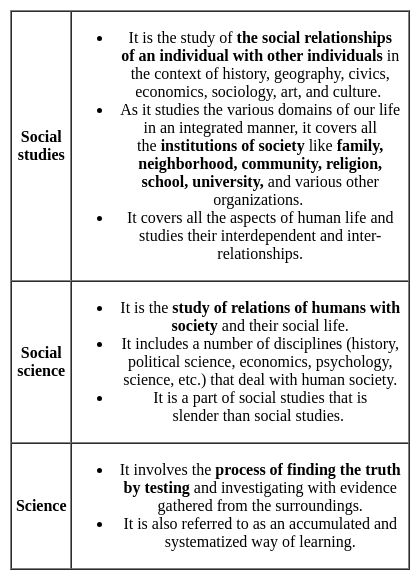EVS Pedagogy (Concept of EVS) - CTET & State TET MCQ
10 Questions MCQ Test - EVS Pedagogy (Concept of EVS)
_______ deal with the interrelationships of human beings with their environment and include their contribution to bringing desirable changes in their surroundings.
Thematic organization of content in EVS helps
A. dissolve the conventional subject boundaries created in the formal education system.
B. encourages the learner to realize the linkages between the various subjects.
C. developing in children an interdisciplinary perspective.
Environmental Studies at the primary level possesses some special characteristics that other subjects do not possess. Which of the following are those characteristics?
I. ‘Values’ are an integral component of Environmental Studies.
II. Environmental Studies is teacher-centered.
III. Environmental Studies is contextual.
Which of these does the environment include?
A. Physical, geographic and biological conditions,
B. Societies, culture
C. Economy
D. Political systems
Environmental Studies at the Primary level draws its contents from science, social science and environmental science. Hence it is a ________ subject area.















